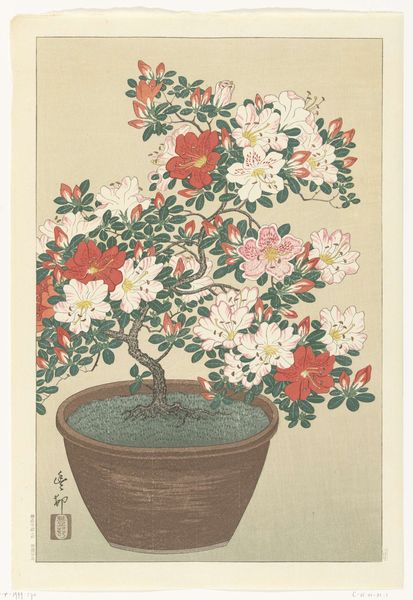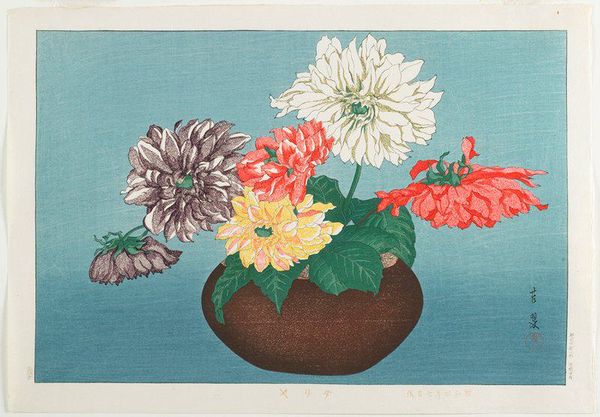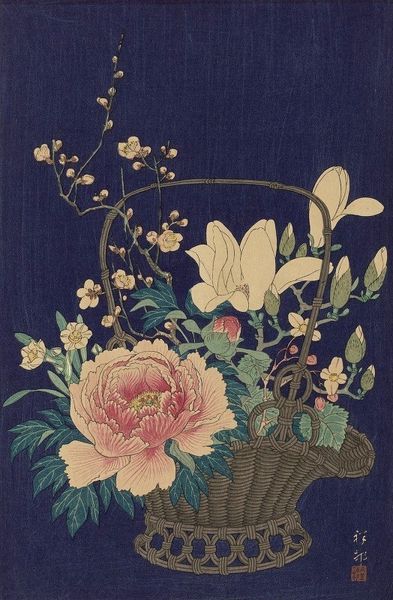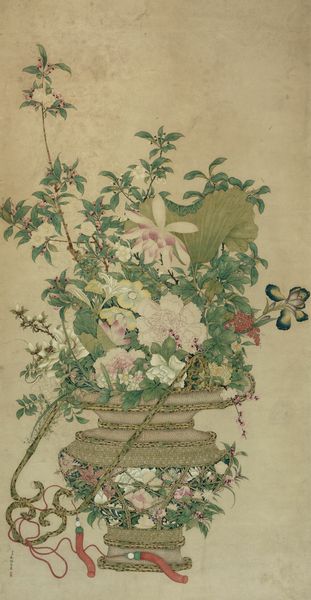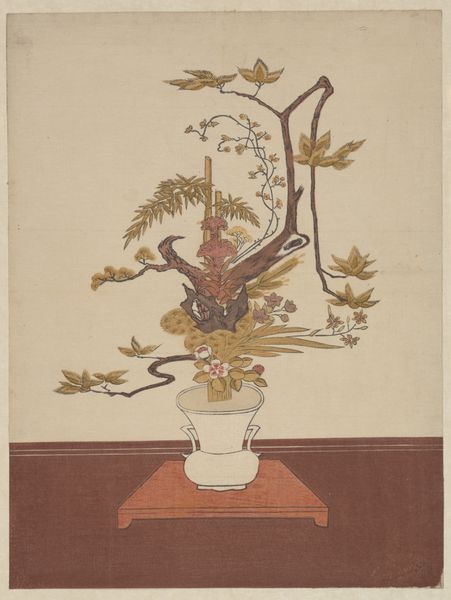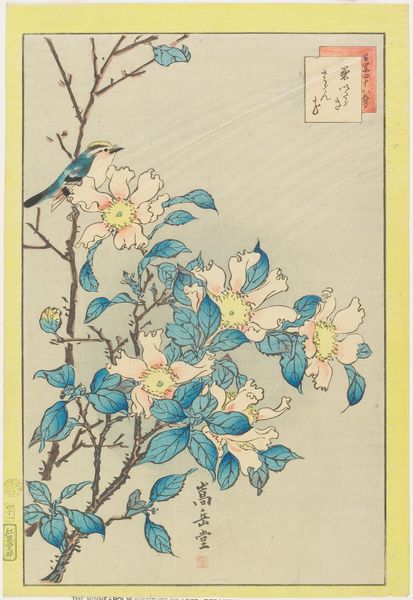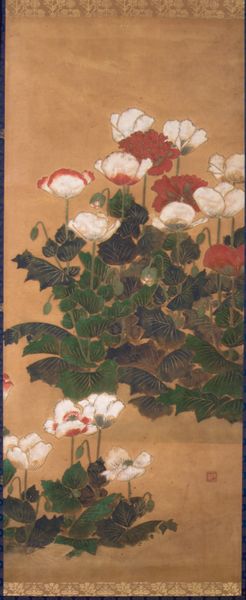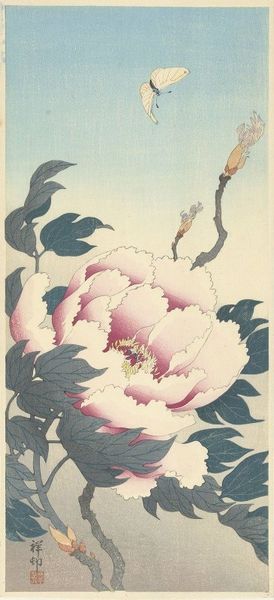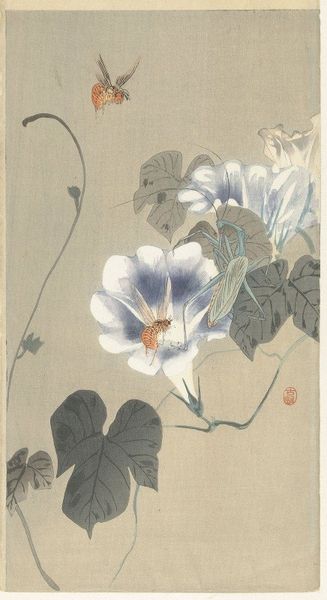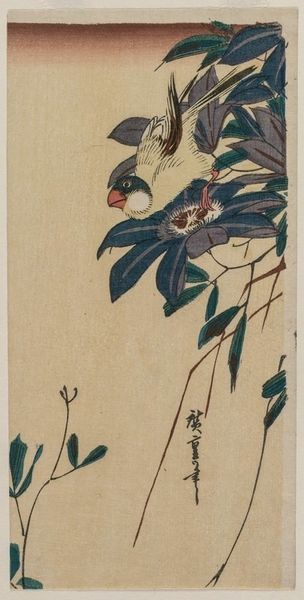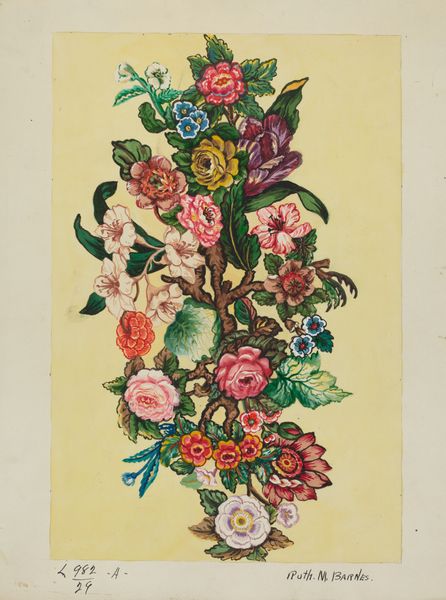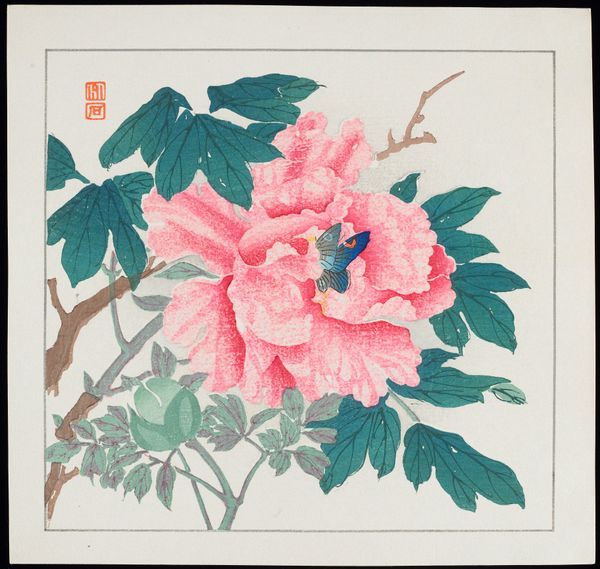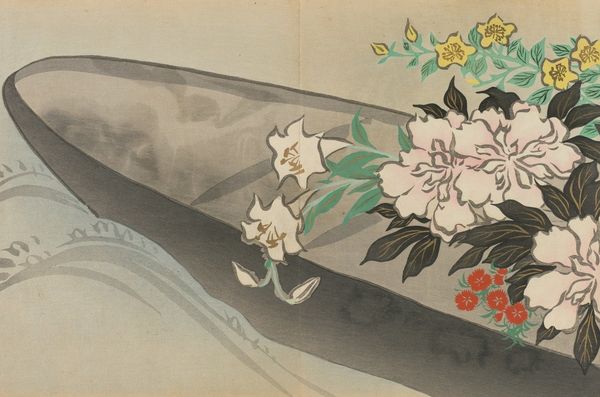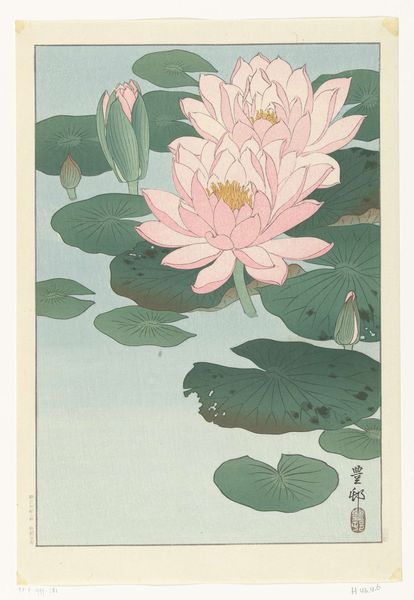
woodblock-print
#
ukiyo-e
#
coloured pencil
#
woodblock-print
#
watercolour illustration
Copyright: Public Domain: Artvee
Curator: Isn’t this “Flowering Azalea in Blue Pot” just exquisite? I get such a cozy, sun-drenched morning vibe from it, somehow! The way the colors play off each other is just luminous, like a spring day bottled up. Editor: Indeed. This woodblock print is attributed to Ohara Koson, a significant figure in the Shin-hanga movement which revitalized traditional Ukiyo-e prints in the early 20th century by catering to Western tastes. It’s an interesting blend of Japonisme and commercialism, really. Curator: Japonisme! That explains why it feels like stepping into a haiku. It's almost dreamlike. I imagine owning that exact azalea and just blissfully forgetting all my woes. And the pot itself, it’s such a profound blue, isn’t it? Reminds me of childhood watercolors. Editor: The blue definitely anchors the composition, doesn't it? Notice how the seemingly simple composition is actually quite deliberate? Koson was deeply immersed in a period where Japanese art had to renegotiate its identity both at home and on the global stage. Prints like this were both art and export commodity, simultaneously. Curator: Oh, fascinating! It doesn’t surprise me. There’s such care and precision here, which really invites you to linger. Those delicate blossoms look painted, but there's a flatness typical of woodblock, right? That dance is compelling. Editor: Exactly. The texture isn't trying to deceive you. What’s interesting is how these prints gained popularity precisely when photography threatened painting. They offered something paintings couldn’t: affordable, aesthetically refined images of "Japan" readily available. Curator: It makes you consider the power of a readily reproducible image, especially as we carry image machines in our pockets. Now that you’ve placed this within such broad contexts, I see so much more in its charming simplicity. It's quite cunning. Editor: Precisely. It is an everyday scene, and the artist is engaging the world, in effect. In its own way, the “Flowering Azalea in Blue Pot" demonstrates how art reflects culture and shapes perception far beyond just the aesthetic. Curator: And it also is deeply pretty... It almost doesn't need that historical layering. Sometimes the simple beauty hits hard all on its own. But thanks for the tour of its historical significance! It's really changed my perception. Editor: It was my pleasure. Perhaps understanding the socio-historical currents can enrich even a seemingly simple viewing experience. Art, after all, thrives when seen and contemplated through multiple lenses.
Comments
No comments
Be the first to comment and join the conversation on the ultimate creative platform.
